When you think of fragrant flowers, Jasmine flowers are probably one of the first flowers that come to mind. There are roughly 200 species of evergreen and deciduous Jasmine shrubs and vines.
Jasmines are well-known for their fragrant white flowers. However, the flowers can appear in several other colors, including blue, yellow, and pink. Most Jasmine varieties are scented with just a few of them being unscented.
Jasmines are perfect for perfuming patios, gardens and indoor spaces.
If you are thinking of getting one for your own space but are unsure of which variety to opt for, we’ve got you. In this article, we give an overview of various Jasmine varieties you should consider.
Table of Contents
Angel Wing Jasmine

Angel Wing Jasmine is an alluring evergreen vine with a shrubby appearance native to the Admiralty Islands of Papua New Guinea. It is also known as Shining Jasmine or Pinwheel Jasmine.
Angel Wing Jasmine flowers bloom in clusters producing large, fragrant, ivory-white flowers with purplish undersides. One unique feature of this Jasmine variety is its long and narrow petals that look like white rays. It also has glossy green leaves.
Angel Wing Jasmine vines can grow to around 15-20 feet tall. But as shrubs, they grow about 2-4 feet with pruning.
They are perfect for hanging in baskets where they have a trailing effect. You can also use them as decorative container plants or use them to fill spaces between shrubs.
Angel Wing Jasmine thrives in full sun or partial shade. It is best grown in zones 10-11.
Arabian Jasmine
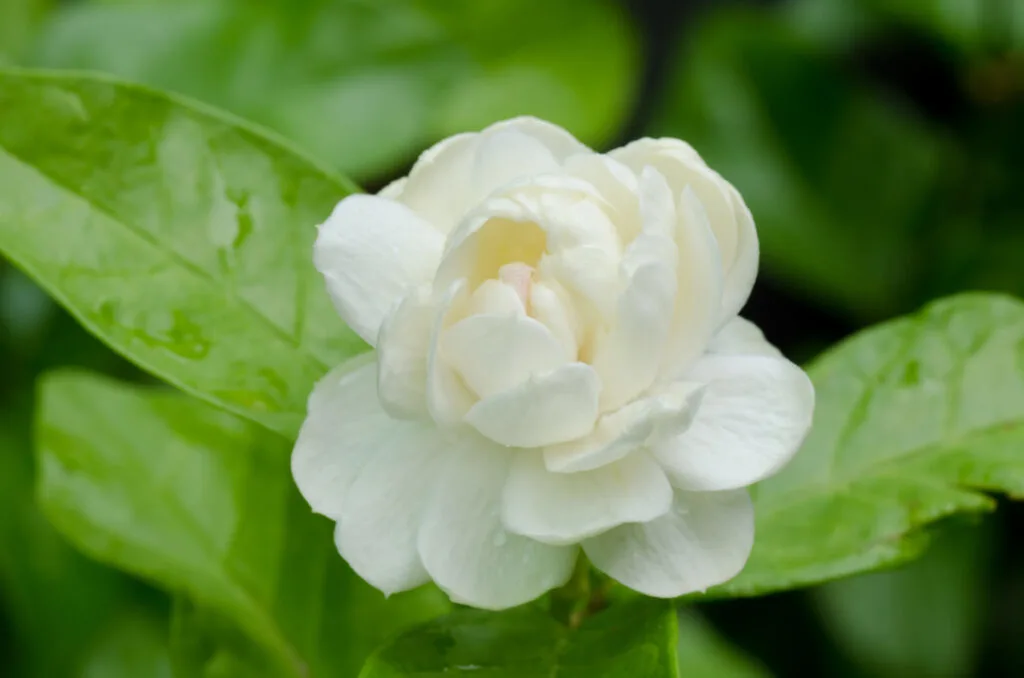
Arabian Jasmine is a medium-sized evergreen shrub native to Southeast Asia and India. It is also known as Asian Jasmine or Sacred Jasmine.
Arabian Jasmine is the official flower of both Indonesia and the Philippines. It has white star-shaped flowers with an intense fragrance.
Arabian Jasmine has unusual glossy leaves that have an ovate shape and clear veins. The flowers have two rows of white petals with a small opening at the center.
Arabian Jasmine is perfect for landscaping. You can also use the vines as ground cover or plant them in containers. Arabian Jasmine grows around 6-10 feet tall and grows well in full and partial shade.
Arabian Jasmine is one of the main species used to make Jasmine tea. It grows best in zones 9-11.
Common Jasmine

Common Jasmine is a popular semi-evergreen or deciduous vining shrub native to China and the Himalayas.
Common Jasmine is one of the commonly grown Jasmine varieties around the world. It is also known as Poet’s Jasmine, Summer Jasmine, and White Jasmine.
Common Jasmine produces large clusters of pure white flowers with 3-5 petals and a sweet fragrance. It has green, fuzzy leaves arranged like feathers on the stem. Common Jasmine can grow around 15-30 feet tall and 15 feet wide.
Due to its climbing habit, Common Jasmine is suitable for covering walls, trellises, and arbors. You can also use it in containers or as a ground cover plant.
In northern climates, Common Jasmine is often grown in pots outdoors and brought indoors as winter approaches. It thrives with full sun or partial shade.
Common Jasmine grows best in zones 7-10.
Dwarf Jasmine
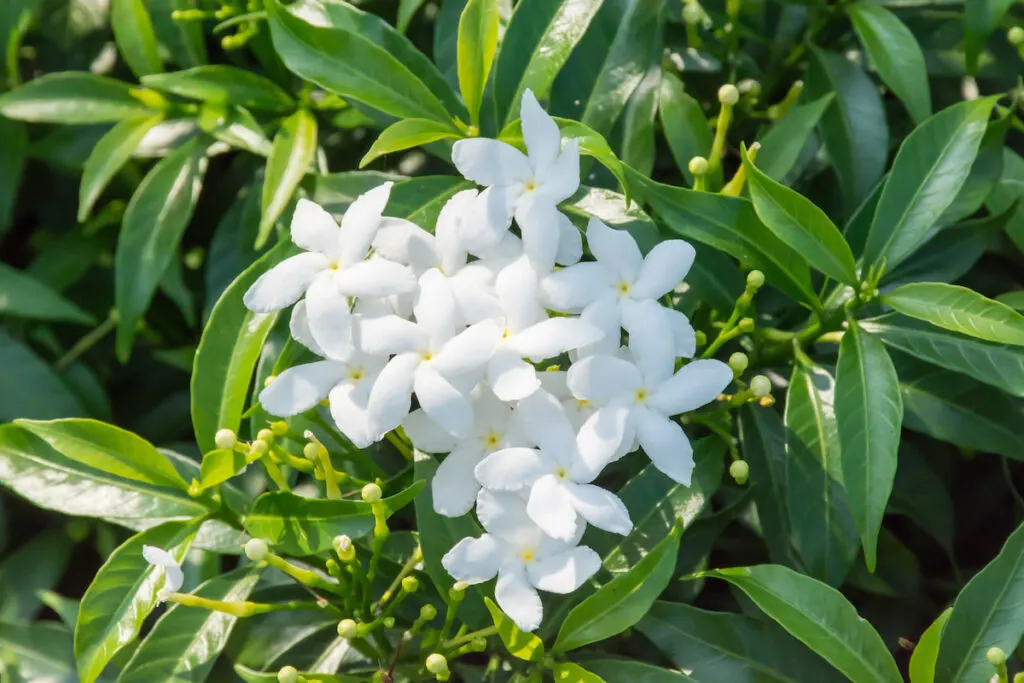
Dwarf Jasmine is a deciduous spreading shrub native to the Western Himalayas. It bears small yellow, fragrant, trumpet-shaped flowers in the spring and summer. It also has small green ovate-shaped leaves that grow on short stems.
Dwarf Jasmine grows well in well-drained soil with full sun or partial shade. It grows to around 1 foot in height. Although Dwarf Jasmine is not as fragrant as other Jasmine varieties, you still get that sweet Jasmine scent from it.
You can plant Dwarf Jasmines in containers, as ground cover plants, or in a small garden. You can prune them into several ornamental shapes. You can also grow them for cut flower displays due to their bright yellow flowers and elegant foliage.
Dwarf Jasmine is best grown in zones 7-10.
Florida Jasmine
Florida Jasmine is a semi-evergreen to evergreen spreading shrub native to China. It is also known as Showy Jasmine due to its showy bright yellow flowers. It also has slender spreading branches with dark green foliage.
Florida Jasmine is easy to care for and drought tolerant. Mature plants can grow around 3-5 feet tall and wide.
Florida Jasmines are ideal for covering walls and fences. To grow them successfully, you need well-drained soil with full sun or partial shade.
Florida Jasmine grows well in zones 6-11.
Indian Jasmine
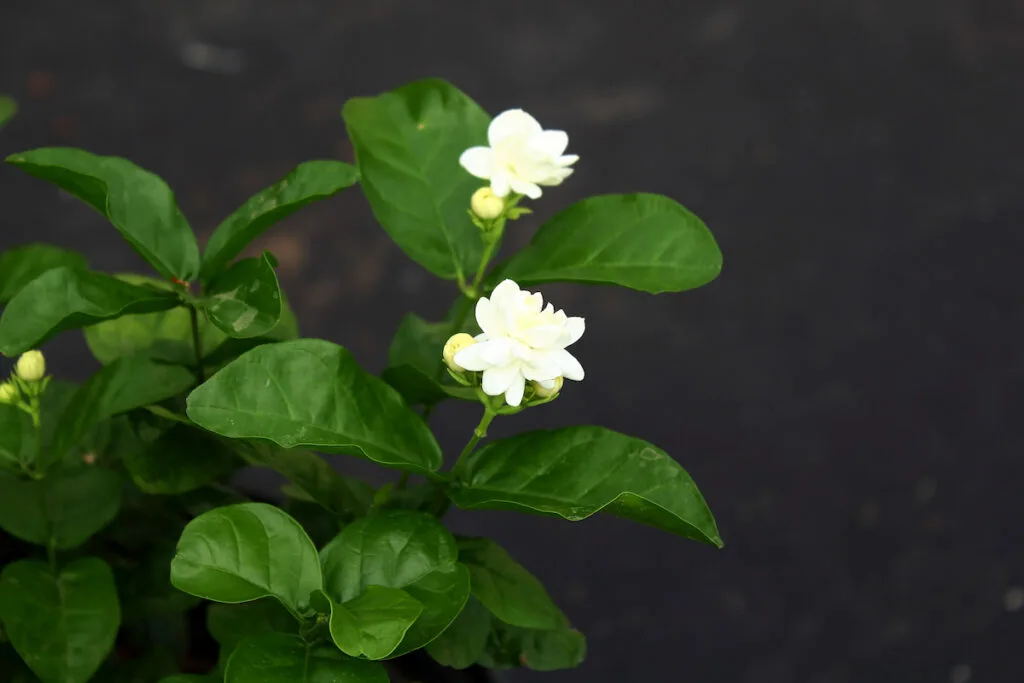
Indian Jasmine is a fragrant, evergreen climbing vine native to Asia. It bears beautiful snow-white flowers that bloom throughout the summer.
Indian Jasmine is easy to maintain. It requires well-drained soil and full sun to grow successfully. Mature Indian Jasmine grows around 10-18 feet in height.
Indian Jasmine is a hardy vine perfect for covering fences or walls. You can also use it for floral pot arrangements or ground cover.
Indian Jasmine grows well in zones 8-11.
Italian Jasmine
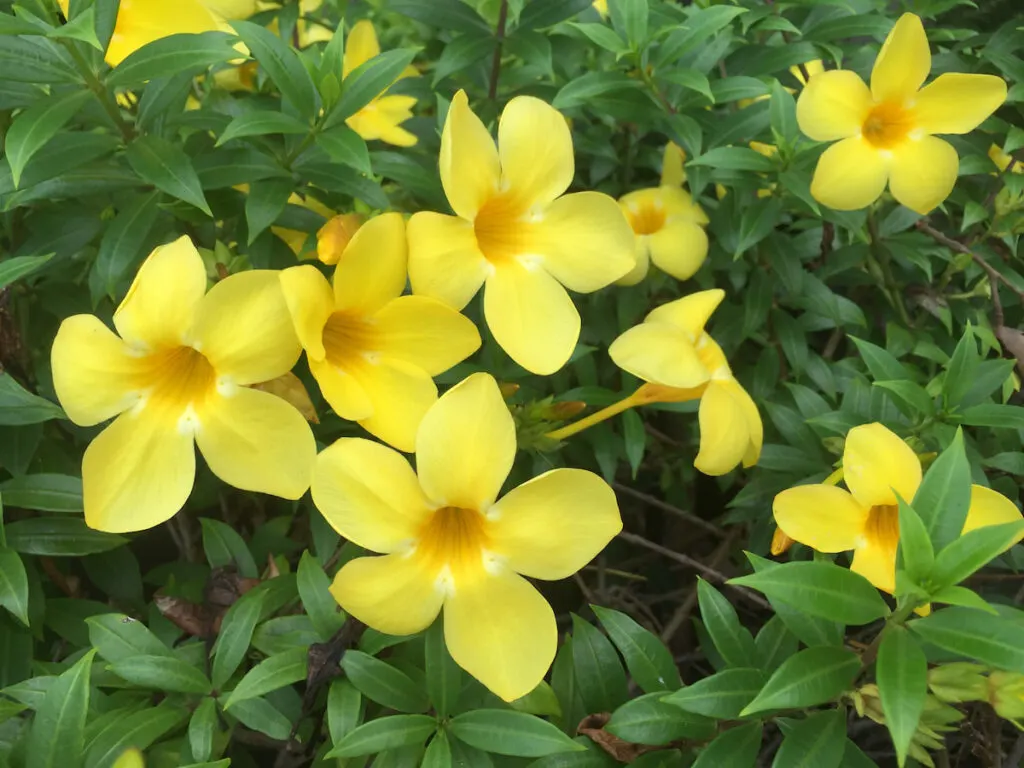
Italian Jasmine is a low-maintenance semi-ever-green shrub native to Asia. It is a popular choice for gardeners in warmer climates.
Italian Jasmine produces fragrant, yellow tubular flowers that droop and grow in small clusters. It has green glossy and featherlike leaves.
Italian Jasmine is a cold-hardy plant. During cold winters, its leaves may or may not stay on the branches. Once the frost disappears, it produces bright yellow flowers from early spring until the end of summer.
Italian Jasmine is perfect for large containers, patios, and terraces. It can grow around 8-13 feet tall and 10 feet wide. It thrives with full sun or partial shade.
Italian Jasmine does best in zones 7-10.
Pink Jasmine
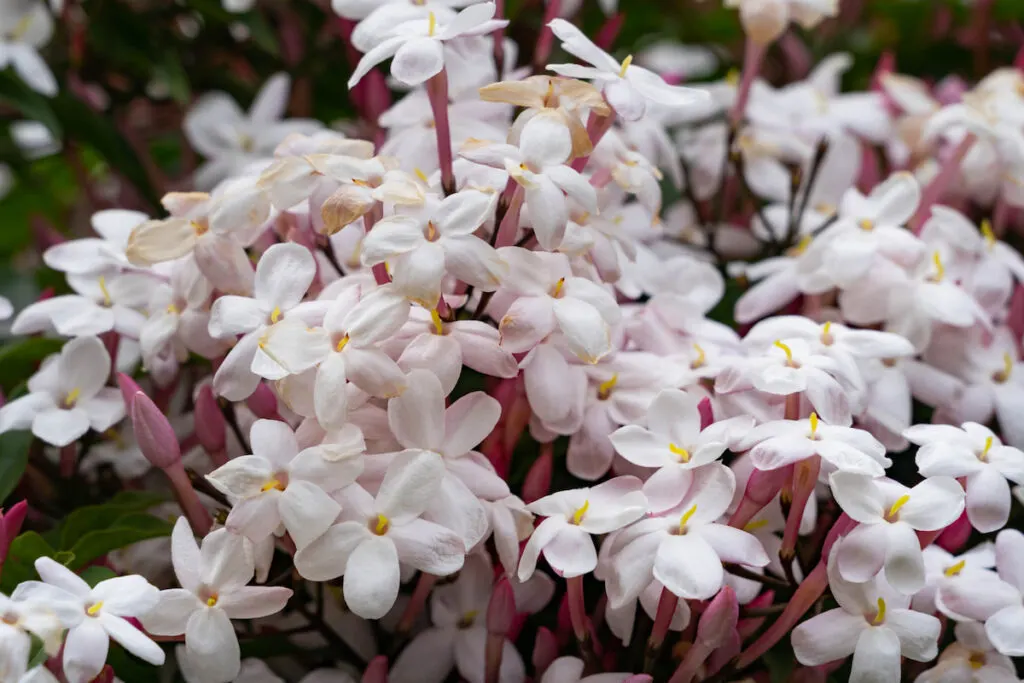
Pink Jasmine is a climbing evergreen vine native to China. It gets its name from the numerous pink buds that decorate its vines.
One unique feature of the Pink Jasmine is its white flowers with a pale pink under shade. The flowers grow in large clusters and release an intense fragrance.
Pink Jasmine thrives in full sun or partial shade. While it is not inflexible about soil conditions, Pink Jasmine does best in well-drained soil. For the most favorable outcome, plant it in loamy soil.
Pink Jasmine can grow up to around 20 feet. It is perfect in containers, floral, ground cover, or decorating trellises or arbors. Since Pink Jasmine is not a clinging vine, you must secure it manually to structures like arbors.
Pink Jasmine thrives in growing zones 8-11.
Primrose Jasmine
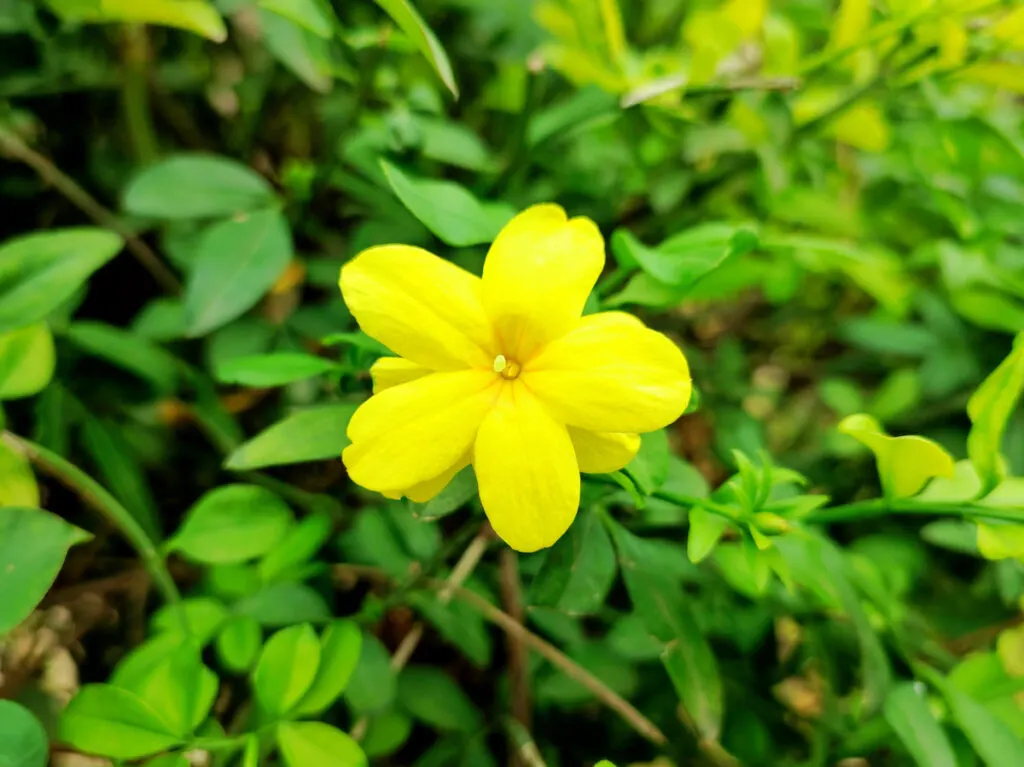
Primrose Jasmine is a scrambling Jasmine variety native to Vietnam and China. It sprawls, grows well in warm climates, and is cold sensitive.
Primrose Jasmine is also known as Chinese Jasmine or Japanese Jasmine. It comes with large yellow flowers that grow in small clusters and last for a few weeks. Primrose Jasmine flowers are typically larger than those of most Jasmine varieties.
Primrose Jasmine thrives with full sun and partial shade. Grow it in fertile, well-drained soil for the best results.
Primrose Jasmine is excellent for moderate spaces like patios. It can grow to around 10 feet tall and 3-7 feet wide. Due to its growth pattern, it tends to get bushy when you do not prune it regularly.
Primrose Jasmine is best grown in zones 8-11.
Royal Jasmine
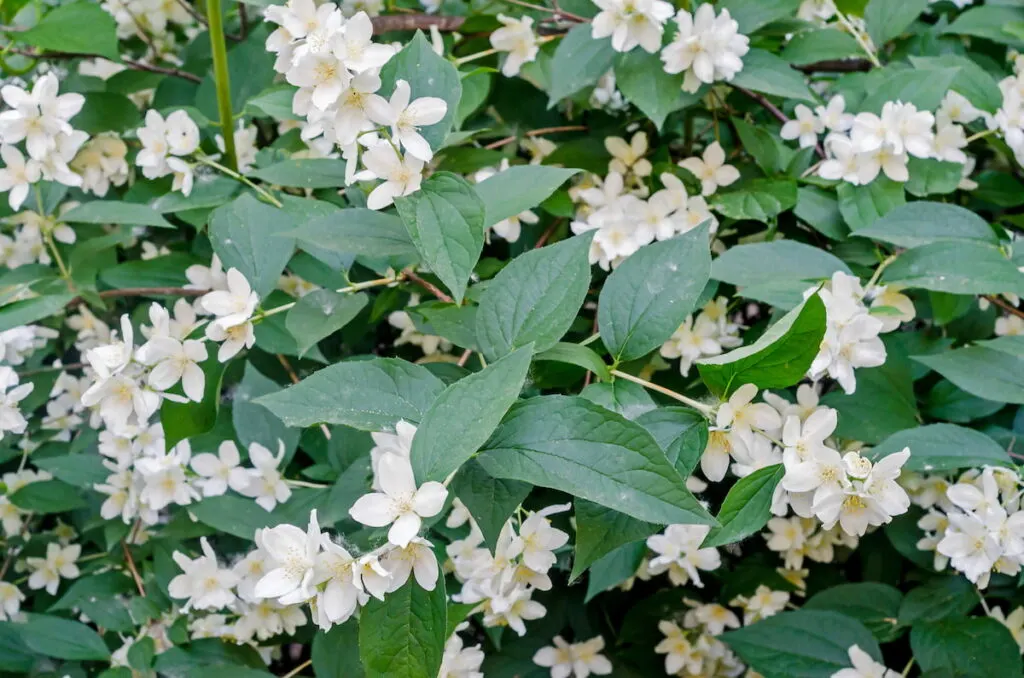
Royal Jasmine is a fast-growing evergreen scrambling vine native to Thailand. Its pure white fragrant flowers are the largest of all Jasmine varieties. The petals have an open star shape, and they grow in large clusters.
Royal Jasmine grows around 8-15 feet tall. It grows best in full sun and partial shade. Although Royal Jasmine is a climbing vine, you can train it to be a shrub. It is perfect for covering trellises, fences, and gates. In some countries, it is used for perfumes and flavoring tea.
Royal Jasmine is best grown in zones 10-11.
Stiff Jasmine
Stiff Jasmine is a creeping evergreen vine native to Australia. It is sometimes called Australian Wax Jasmine.
Stiff Jasmine has white, attractive star-shaped flowers. It also has large, emerald-green, egg-shaped leaves with raised veins.
Although Stiff Jasmine is a scrambling vine, you can train and keep it as a shrub. As a shrub, it can grow around 2-5 feet tall. But as a vine, it can reach over 13 feet. It thrives in well-drained soil while exposed to full sun or partial shade and is best grown in zones 8-11.
Star Jasmine
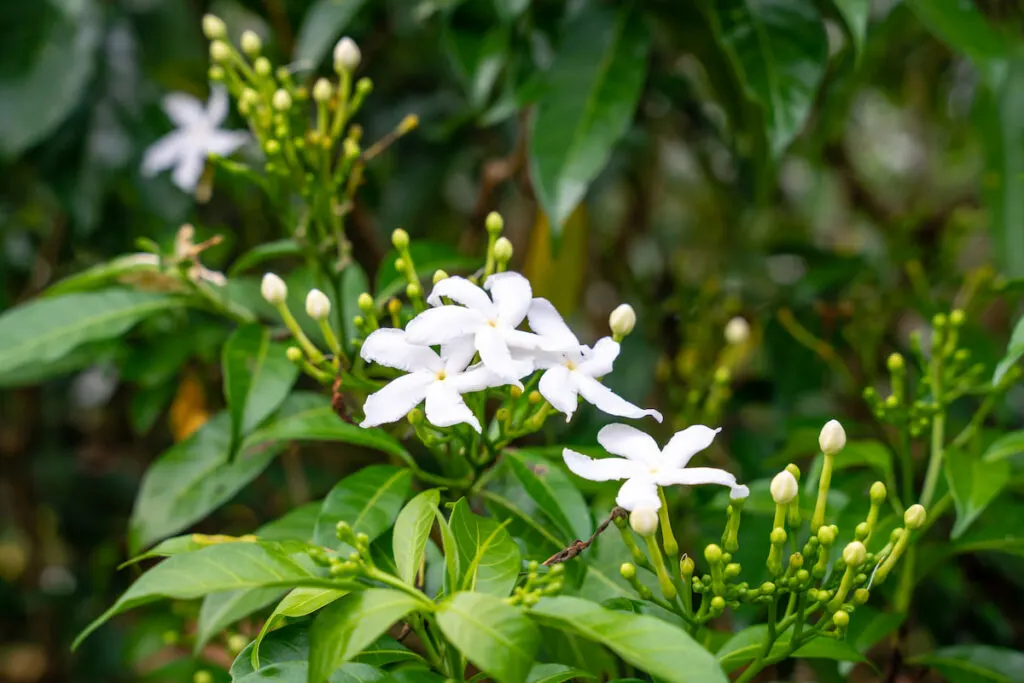
Star Jasmine is a popular scrambling vine native to Asia. It has white, star-shaped flowers that blossom in late spring or early summer.
Star Jasmine flowers are quite fragrant and are known to attract bees. They also have attractive glossy green foliage. The ideal planting conditions for Star Jasmine includes moist, well-drained soil with full sun or partial shade.
Star Jasmine is an excellent garden plant. You can also use it for large terraces, patios containers, or spreading ground cover.
Mature Star Jasmines grow around 3-6 feet tall and wide. They are hardy in zones 8-10.
Spanish Jasmine
Spanish Jasmine is a slow-growing shrub native to the Middle East, Asia, and Africa.
Spanish Jasmine produces clusters of pure white fragrant flowers with thin petals. It has vine-like branches with attractive glossy leaves.
Spanish Jasmine does best in rich, well-drained soil and in full sun or partial shade.
Spanish Jasmine is the ideal garden plant. But it may also be grown indoors as a window pot plant.
Mature Spanish Jasmine grows around 13 feet tall, which may be too long for an indoor plant. To prevent it from growing too long, ensure you trim and prune it regularly.
In some cultures, Spanish Jasmine leaves are used for herbal medicines. The flowers are also ingredients in making perfumes.
Spanish Jasmine grows best in zones 8-11.
Winter Jasmine
Winter Jasmine is a medium-sized shrub indigenous to China. It is also known as Winter-Flowering Jasmine or Hardy Jasmine.
Winter Jasmine has fragrant lemon-yellow, spiky-looking flowers. It also has dark green foliage, slender green stems, and long arching branches.
You can grow winter Jasmine as a shrub or a vine. As a vine, it grows up to 15 feet tall. But as a shrub, it grows to around 4 feet.
Winter Jasmine is excellent for patios, decorating arbors, and containers. You may also use it in covering retaining walls or as ground cover on slopes. Winter Jasmine thrives in full sun or partial shade and well-drained soil.
Winter Jasmine is best grown in zones 6-10.
Wild Jasmine
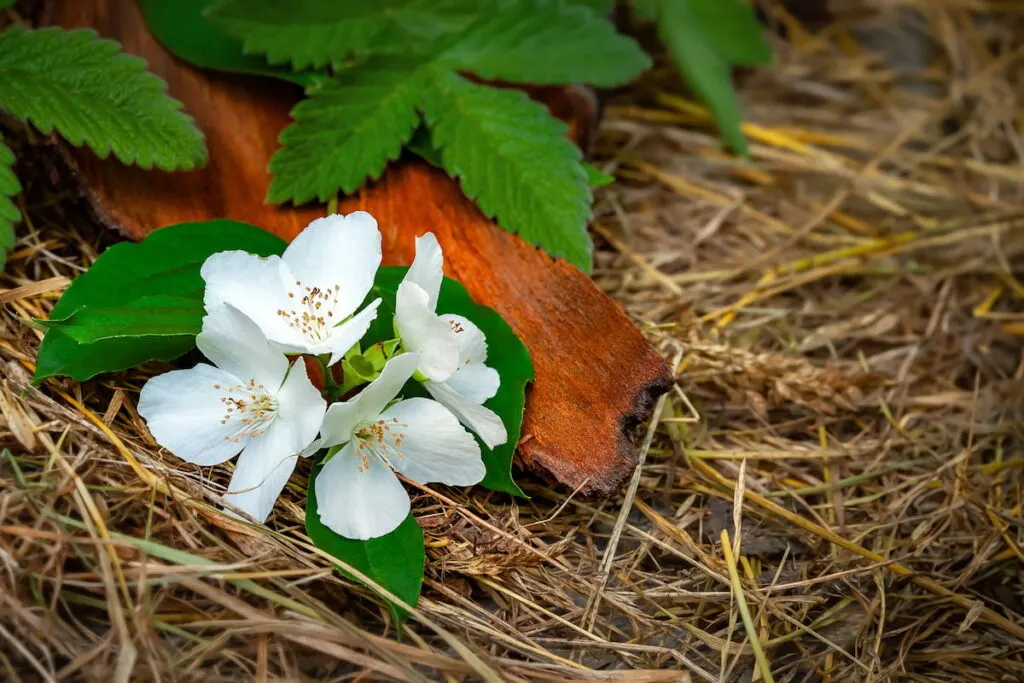
Wild Jasmine is a small evergreen shrub native to Southern Europe. It has small clusters of bright yellow tubular flowers that blossom in the spring. It also has thick, oval, waxy leaves that have rounded tips.
Wild Jasmine is a cold-hardy plant. Although it grows slowly, it is resistant to pests and diseases. Wild Jasmine grows best in full sun or partial shade and rich, loamy soil. It reaches around 12 feet tall and 8 feet wide when mature.
You can grow Wild Jasmine as an attractive hedge or train it as ground cover. You can also use it as a cascade over a wall or fence.
Wild Jasmine is best grown in zones 7-11.
Resources:
- https://leafyplace.com/types-of-jasmine-flowers
- https://www.thespruce.com/jasmine-shrubs-and-vines
- https://www.britannica.com/plant/jasmine-plant
- https://www.gardeningchores.com/types-of-jasmine-flowers
- https://leafyplace.com/types-of-jasmine-flowers
- https://hgic.clemson.edu/factsheet/jasmine
- https://www.joyusgarden.com/how-to-grow-pink-jasmine-vine
- https://www.gardenia.net/plant/jasminum-mesnyi
- https://www.gardeningknowhow.com/ornamental/flowers/jasmine/winter-jasmine-care
- https://candidegardening.com/GB/plants
